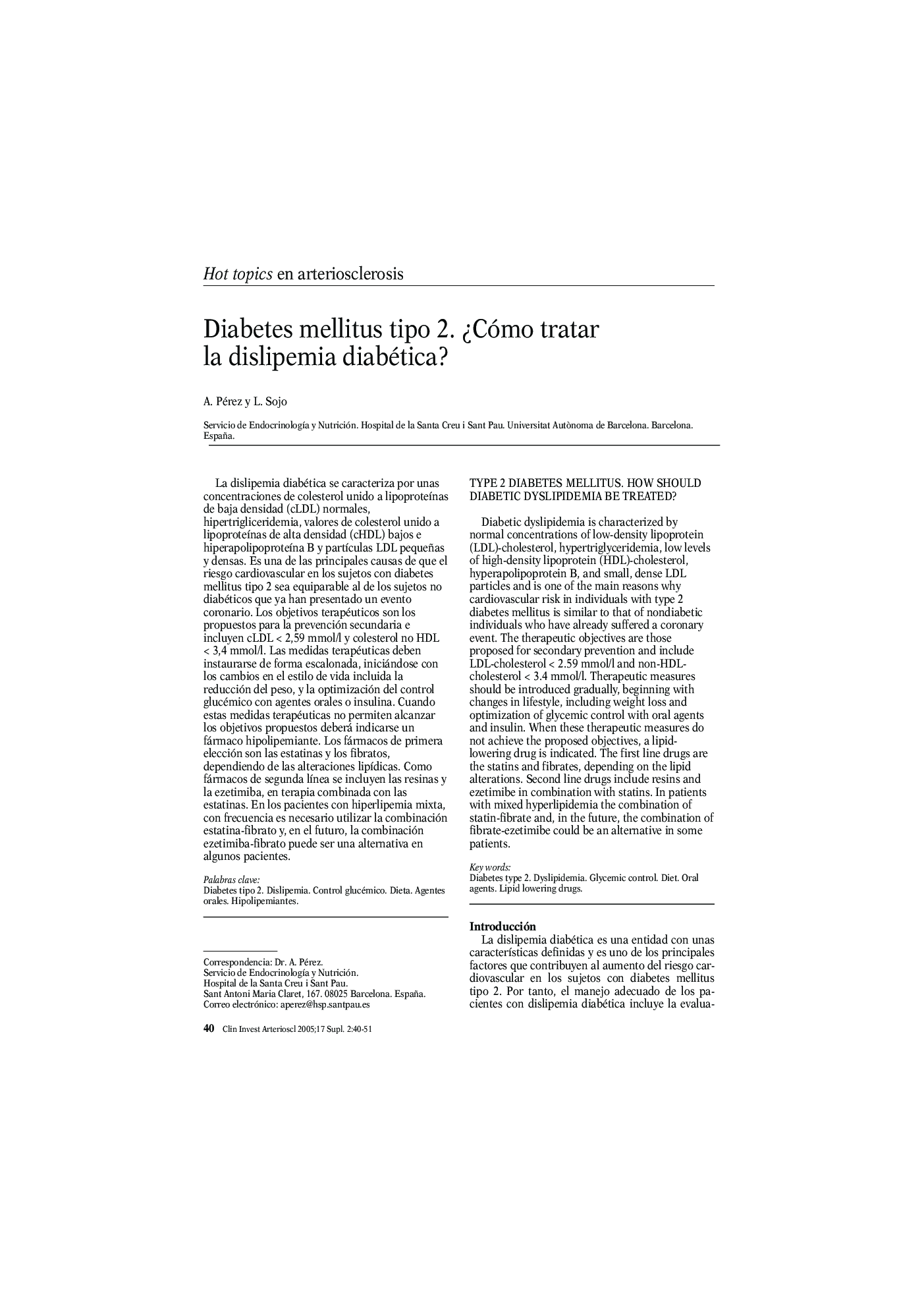| Article ID | Journal | Published Year | Pages | File Type |
|---|---|---|---|---|
| 9146863 | Clínica e Investigación en Arteriosclerosis | 2005 | 12 Pages |
Abstract
Diabetic dyslipidemia is characterized by normal concentrations of low-density lipoprotein (LDL)-cholesterol, hypertriglyceridemia, low levels of high-density lipoprotein (HDL)-cholesterol, hyperapolipoprotein B, and small, dense LDL particles and is one of the main reasons why cardiovascular risk in individuals with type 2 diabetes mellitus is similar to that of nondiabetic individuals who have already suffered a coronary event. The therapeutic objectives are those proposed for secondary prevention and include LDL-cholesterol < 2.59 mmol/l and non-HDL cholesterol < 3.4 mmol/l. Therapeutic measures should be introduced gradually, beginning with changes in lifestyle, including weight loss and optimization of glycemic control with oral agents and insulin. When these therapeutic measures do not achieve the proposed objectives, a lipidlowering drug is indicated. The first line drugs are the statins and fibrates, depending on the lipid alterations. Second line drugs include resins and ezetimibe in combination with statins. In patients with mixed hyperlipidemia the combination of statin-fibrate and, in the future, the combination of fibrate-ezetimibe could be an alternative in some patients.
Keywords
Related Topics
Life Sciences
Biochemistry, Genetics and Molecular Biology
Physiology
Authors
A. Pérez, L. Sojo,
